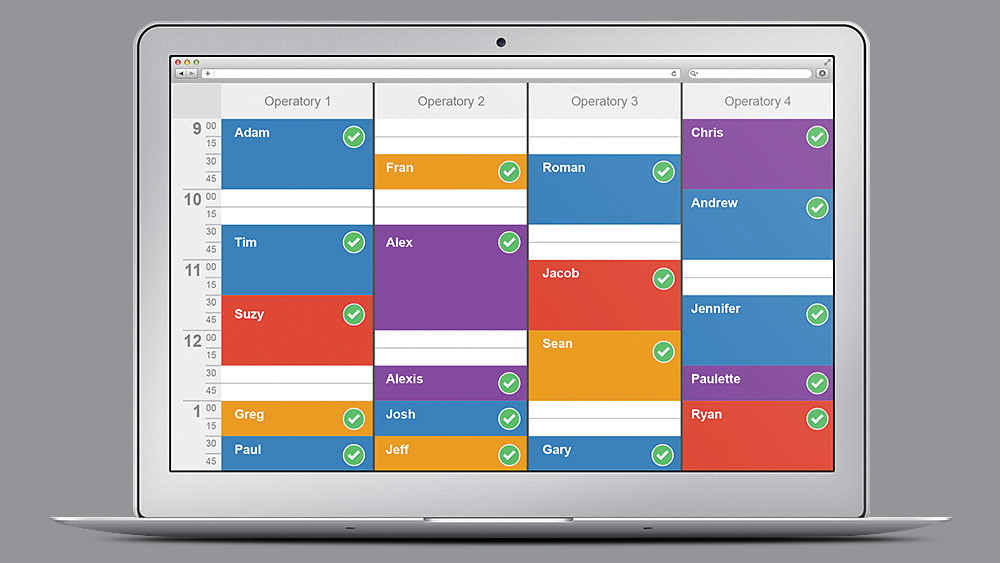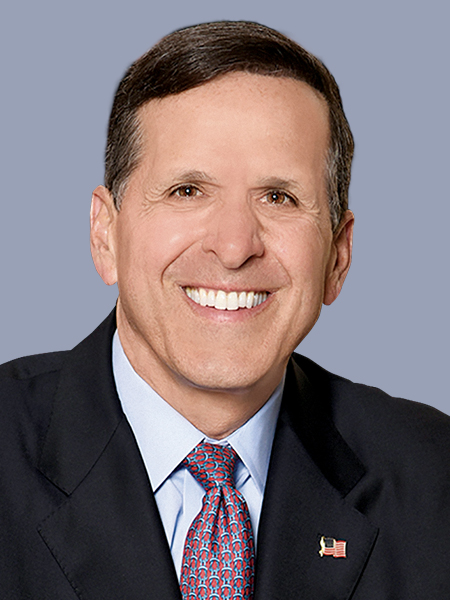20 Strategies for Successful Practice Recovery

As the restrictions that closed dental practices across the nation begin to lift, dentists must consider how they will approach their COVID-19 recovery. This article will take you through proven, actionable strategies that will help you emerge successfully from this crisis.
Let me preface these strategies by saying that I’m not going to attempt to anticipate what regulations might come out of this COVID-19 crisis and how those will impact dentistry. We can only work with what we know as of today.
Instead, I’ll focus on strategies that help you achieve production. While production has always been important, in the time of recovery it becomes more important than ever before.
I believe that dentists going back to work will need to turn their businesses around. Fortunately, there are proven, key strategies that will help you achieve this. These strategies are taught in business schools and covered in textbooks; if you follow the academic science, you have an excellent chance of turning around your business.
In a turnaround you need to be hyper-focused on a few key things — and the one I’m going to focus on in this article is revenue. This is the formula I teach: Production creates revenue, revenue creates cash, and cash creates income. The following strategies are aimed to address that formula.

#1: FOCUS ON THE NEXT STAGE WHILE IN THE CURRENT STAGE
In order to understand how to approach the COVID-19 crisis, we’ve built a model with three stages:
- Stage 1: The COVID-19 Crisis
- Stage 2: Entering Recovery
- Stage 3: Recovery
Keep in mind that there are three stages of this COVID-19 crisis and that you should be looking to solve your forthcoming challenges in the next stage. As the situation in your state evolves and you move from stage to stage, remember to look ahead. For example, in moving from Stage 1 to Stage 2, you should think about which patients you might bring back first and which staff you'll need in order to treat those patients.
#2: KNOW THAT THERE'S A RECOVERY TIMELINE
Within the recovery, we believe there’s a timeline:
- Phase 1 (Months 1–4): Extreme Busyness Due to Pent-Up Demand
- Phase 2 (Months 5–12): Production Decline
- Phase 3 (Months 13–24): True Recovery
Upon reopening your practice, you’ll likely be extremely busy based on the pent-up demand. Keep in mind that, while this may feel like everything is back to normal, it is unlikely that this period will last.
In Months 5–12, expect your production to drop. This reality is based on so many patients losing their jobs and needing to focus their energies elsewhere.
In Months 13–24, you’ll begin the critical recovery phase. This phase determines if you recover, and how fast and how well you recover. The goal of this third phase is to reach 80% of the average monthly revenue that you had in 2019 by the 24th month of the recovery process. If you can reach that number, that helps secure your practice’s future.
#3: DEVELOP CRISIS LEADERSHIP
Crisis leadership is different from everyday practice leadership. There are three factors of leadership in a crisis: resilience, agility and flexibility.
In resilience, you must be willing to go with the flow as information arises. This doesn’t mean being a victim or focusing only on reacting. Rather, it means that you shouldn't be so locked in to the ways things should be that you find yourself in serious trouble.
The second factor is agility (i.e., the ability to pivot). Be able to change direction.
The last factor is flexibility. No matter how well you plan, things are not going to turn out exactly the way you want them to. Remember this statement: No plan survives a collision with reality. To be a good crisis leader, you cannot be rigid — you’ll have to be resilient, agile and flexible.
#4: USE THE ONE-PAGE COVID-19 STRATEGIC RECOVERY PLAN
Visit the Levin Group's COVID-19 Recovery Resource Center at levingroup.com and download the free One-Page COVID-19 Strategic Recovery Plan. This critical tool breaks your response management into four quadrants: practice, staff, patients, and financials.
For each category you have to write a goal. Then, in each category you'll list three of four key value-bassed strategies that will directly contribute to the recovery goal of that quadrant. Ensure that you’re only focused on the recovery and not on the next five to 10 years.
So, for example, under the "patients" category you might put down how many active patients you want to have. And you’d devise key strategies that would help you reach that goal. Keep in mind that every strategy must be measurable and quantifiable. And every category must have a goal statement to work toward.
#5: IDENTIFY YOUR TOP 25 RECOVERY RELATIONSHIPS AND BE CONSIDERATE
Make a list of everyone who is going to help you in the recovery. It might include any of the following:
- Staff
- Bankers
- Financial advisors
- Accountants
- Attorneys
- Consultants
- Coaches
- Landlords
- Suppliers
- Laboratories
- Credit card companies
- Leaseholders
- Vendors
- Friends
Be considerate of the people in your top 25 list (as well as everyone else). These people are going to help you in your recovery, and they’ll likely remember how you behaved during the crisis.
#6: ADOPT A NEW RECOVERY SCHEDULE AND EXPAND RESPONSIBILITES

Firstly, you’ll likely have to expand your hours. This recovery period will not be business as usual. You may have to work evenings or weekends, or even cancel vacations. Ensure that you or your staff members are answering your phone lines every single time they ring. You must be reachable.
Secondly, you and your staff will have to take on new responsibilities. You should be writing scripts right now for the calls you’ll be making once your practice is open.
Address a variety of topics, including rescheduling overdue patients or talking to new patients. While you may have automated text-messaging software that already does this, patients will be much more receptive to calls. Your scripting must include how you’ll be keeping your patients safe from disease, as well as any expanded financial options you’ll be offering.
With these scripts, create a schedule of contacting patients. Call them once a week for three weeks, then text them once a week for three weeks, then email them once a week for three weeks. Ensure that you’re showing them that you’re compassionate and that you acknowledge the hardships they may be in with their families or finances.
You should be prioritizing the highest production first. You must block out time in your new schedule for new patients and emergencies because these will help keep your production level high. The faster you get in productive treatment, the easier your turnaround will be. New patients and emergency patients represent a higher financial value than existing patients do.
#7: LEARN HOW THE GREAT RECESSION IMPACTED DENTAL HYGIENE AND PLAN ACCORDINGLY
Considering we do not yet have any data about what will happen in the dental practice due to COVID-19, we might be able to learn from the Great Recession. If we look back at that time period, hygiene appointments dropped 15% and approximately 20% of hygienists lost their jobs.
We can anticipate that hygiene may be a bit of a challenge after the first two months of recovery. There will likely be a surge of pent-up demand immediately once practices open, but after that we expect a drop. You’ll need to create a temporary solution to answer that demand. However, there will be a decline in hygiene appointments in Months 3–5. You’ll have to continually reevaluate your staffing needs during this period.
#8: KNOW YOUR BREAK-EVEN POINT
Your break-even point is critical and simple. You can find it by measuring the revenue you expect to have per week against the expenses you expect to pay per week. If revenue exceeds expenses, you’re positive. If it doesn’t, you’re negative.
You must monitor this number relationship constantly. You must be taking a pulse of this number every day and getting a hard number every week. This recovery period is not business as usual, so you must be constantly aware of your break-even point.
#9: SCHEDULE THE HIGHEST REVENUE PATIENTS FIRST
Schedule new patients, large cases and emergencies first. These cases will lead to high production and keep your practice alive.
You might be asking whether or not this is fair. Well, this isn’t a moral debate — it's a survival debate. It is smart to have your highest production as early as possible. You need to have revenue generated so that you can continue helping patients over a longer period of time.
The first objective of your turnaround is to get to that break-even point. Once you’ve hit that, you’ve survived. After that you can start working toward profit and greatly expand the types of patients you’re seeing.
#10: EXPAND FINANCIAL OPTIONS
We recommend that you increase patient financing by 200%–300%. You’ll be able to make this part of your scripting for patients.
Additionally, you may want to add payment plans to your practice. Even though this likely will result in your collection rate dropping, you must keep in mind that the break-even point and covering overhead are essential for survival.
Collecting a percentage of those payments is better than continuing to turn away patients. There’s a higher percentage of patients who don’t have the disposable income to pay for treatment up front. Also, consider offering discounts to some fee-for-service patients.
#11: PERFORM A DENTAL INSURANCE ANALYSIS

Use this time to perform an insurance analysis. Think about the following as you decide to enroll or not enroll:
- What is your revenue percentage from dental insurance?
- What is your revenue percentage from each specific dental insurance?
- What is the number of patients in all insurance plans?
- What is the number of patients in each specific plan?
Don’t make any knee-jerk decisions. You can enroll at a later time if needed. Once you’ve made your analysis, you should run another analysis every six months to determine whether or not you should be in a specific insurance plan.
#12: CREATE SCRIPTS
Scripting will be essential to your recovery. You and your staff should be using scripts for all communications with patients. You must have compassionate scripts for everything: collections, onboarding, insurance explanations, etc.
#13: ANALYZE CASH WEEKLY
Cash is king — if you have cash, you survive. And if you have cash, you also have options. You’ll need to know weekly how much cash you will have on hand and whether or not you’ll be cash-positive or -negative. Knowing this allows you to make decisions and start building cash reserves.
#14: ACCUMULATE FOUR MONTHS OF CASH
Work toward accumulating four months of cash. This will happen gradually, over 12–18 months. Put this cash in a separate account so you don’t use it.
We simply don’t know if COVID-19 will come back and force us to suspend practicing again. We don’t know what the future holds. We need to be prepared for future risks.
If you never use that cash, then it becomes income you can take home later. However, having that cash in reserve ensures that your practice can survive.
#15: BRING BACK A FOCUSED TEAM

If your team hasn't been brought back yet, you should be communicating with the team daily. When it is time to bring people back, you'll need to create a new culture that's focused on recovery.
People coming back should have a much better work ethic simply because there will be fewer jobs available. Rally your team members around recovery and cross-train them to take care of multiple roles. Over time you may have to reevaluate your staffing allocation and let people go, so you'll need to ensure your remaining employees are widely capable.
Lastly, think about putting in a recovery bonus. You may be wondering how you’re going to be in a position to give a bonus considering you’re out of work. This will be different from any normal bonus. This bonus would be strictly for the recovery. Tell your team members that if their performance is extraordinary over the next six months, they will receive X. But they must understand that if they do not perform extraordinarily, they will receive nothing. It must be black and white. I’m confident that if they perform extraordinarily, you’ll be in a place to give them the bonus.
#16: COMMUNICATE, COMMUNICATE, COMMUNICATE
Right now, if you’re not open you should be communicating with the team daily, communicating one-on-one with each team member weekly, and communicating with three to five patients daily.
Your staff and patients will be more eager to return if you do this. And don’t forget about social media, where you can communicate in a positive and upbeat way to ensure your practice stays in people's minds.
#17: MEASURE KEY PERFORMANCE INDICATORS
Right now all your measurements should be focused on the recovery. You should be measuring all of these at a minimum:
- Production
- Collections
- Revenue
- Cash
- Doctor income
- Number of active patients
- Number of overdue patients
- Expenses
Track these numbers daily and weekly. By doing so you’ll see the trends and be able to make informed decisions.
#18: BEGIN CONSIDERING TELEDENTISTRY
I’m becoming very bullish toward teledentistry. While there certainly are technological aspects that still need to be ironed out, I believe that dentists will be able to use teledentistry in a limited sense in the near future. For example, for post-op appointments you’ll be able to simply evaluate your provided care without having to use up valuable chair time.
#19: CONSIDER ADOPTING IN-HOUSE PATIENT DENTAL MEMBERSHIP PLANS
Some of your patients have likely lost their jobs and their dental insurance. During the recovery period, you may want to consider adopting in-house dental membership plans to allow these patients to continue accessing care.
With these plans, patients are able to stay with you for a monthly fee. There’s a number of good plans out there. The one I’m most familiar with is DentalHQ.
#20: BUILD TEAM ACCOUNTABILITY
To keep every single team member accountable (including the doctor), every person should be assigned three priorities. To keep the team focused, these priorities should be hung up in the staff room and repeated in weekly meetings.
Right now you cannot afford to make mistakes, so you have to keep your team laser-focused. A good way to do this is to create daily checklists for every position. This will help team members (and you) avoid skipping steps.
CONCLUSION
Before the COVID-19 crisis, you could still achieve success by being less efficient or even inefficient. This will not be the case anymore.
The likely forthcoming regulation will not make us faster or more efficient — so you’ll need to expect to be a little bit slower and focus on being more productive than ever. I encourage you to follow the experts, be mindful of best practices, and be resilient, agile and flexible.
You must have absolute faith that you will prevail. You’re going to have to confront the brutal facts: You’ll be expanding hours, working harder, and making tough decisions. If you do those things, you can get through this.



